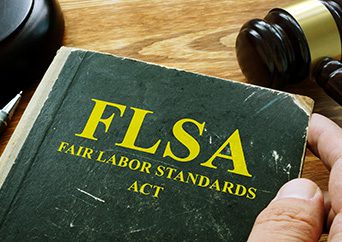With nearly 40 years of safety experience, I’ve dealt with too many horrific work-related injuries and fatalities. Companies often “get religion” after a work-related death or catastrophic injury, but it’s too late for the dead or severely injured worker. Everyone in the safety occupation strives to prevent these events from happening, but despite these efforts, employees are still injured and killed at work.
With a strong focus on prevention, we often lose sight of what can be done immediately after an injury occurs. CPR and First Aid are skills that can save a life after an accident or life-threatening illness. Many years ago, while I was teaching a CPR class, a construction worker told me how his co-worker dropped to the ground, unconscious. He called 911, but there was no one nearby to render aid. As he waited for paramedics to arrive, he could only watch as his buddy eventually stopped breathing and turned blue with his eyes rolled back in his head. Eventually, paramedics arrived and took him to the hospital where he was pronounced dead. I’ll never forget this story, and neither will this man whose experience is forever etched in his memory.
Fast forward about 20 years: I recently provided CPR and First Aid training to Horton employees who volunteered for the training. No less than 30 minutes following completion of the course, a Horton employee applied the skills she learned, which may have helped save the life of a nine-year-old girl. The little girl had fallen off of her bike (no helmet) headfirst onto the pavement. The Horton employee tended to a bleeding head wound on the non-responsive girl and convinced the mother to call 911. The mother was reluctant to call for emergency assistance (a very common phenomenon), but the Horton employee urged her to make the call while she tended to the girl’s needs. Following the incident, the employee was shaken but felt empowered in her ability to help. She doesn’t know what happened to the little girl but was very relieved she was able to help.
Over the years, I’ve trained hundreds of people in CPR and First Aid. My wife saved the life of a neighbor’s child, and later, the life of my son by applying the choking skills. Skills I taught to Horton employees were used to save the lives of their children found at the bottom of pools. I’ll never forget the Horton employee who hugged me, with tears in his eyes, thanking me for training his wife who resuscitated his daughter. She was discovered non-responsive and pulled from the bottom of a swimming pool. Fortunately, his wife revived the child before paramedics arrived 15 minutes later. Without CPR applied immediately, the child would have died or suffered irreparable brain damage.
In safety, we believe it is imperative for employers in dangerous industries to provide this training to all employees. I believe it is important for all employers, regardless of industry, to provide and support this training. Does it matter if a valued employee dies of a heart attack in an office environment or because they were electrocuted on a job site? How would you and your employees feel watching someone take their last breath while waiting for paramedics to arrive? I’m sure these companies “get religion” after they mourn the loss of a valued employee. That’s good, but not all that good for the dead employee.
In addition to CPR skills, employers should invest in AED’s (automated electronic defibrillator). For every one-minute access to an AED is delayed to a heart attack victim, chances of survival are reduced by 10%. The AED is an amazing device that drastically increases the chances of survival following a heart attack. As prices of these devices decline, they will be found in many homes. They are simple to operate and extremely effective, which is why they are being placed in populated areas where they are easily accessible. While AED’s are easy to use, they require the administration of CPR by properly trained responders.
Imagine the moment a life-threatening emergency occurs at your business (it happens every day), and how you and your employees will feel as you watch a co-worker die while waiting for emergency responders. CPR and First Aid skills involve about four hours of instruction and should be repeated every two years. AED’s cost about $1,500 and all businesses should consider obtaining one. I’m often asked if insurance companies provide a discount for businesses that purchase an AED. There is no discount for businesses who purchase an AED, but there is a significant reduction and “discount” in guilt when the device is used to save a life.
The bottom line is that CPR and First Aid work. While not all lives can be saved, the skills at least allow a victim the opportunity to be saved by highly trained responders. Without these skills, untrained individuals will have the unfortunate experience of watching someone’s life slip by as they helplessly stand by. All of us should do whatever we can to prevent that from happening. Is your place of business prepared to save a life?
Material posted on this website is for informational purposes only and does not constitute a legal opinion or medical advice. Contact your legal representative or medical professional for information specific to your legal or medical needs.



